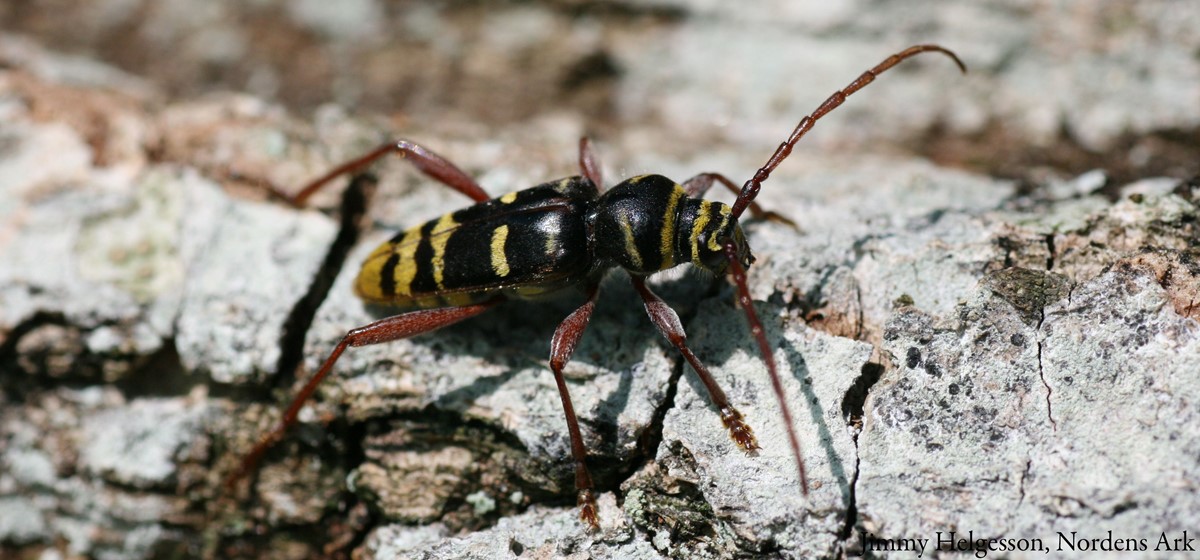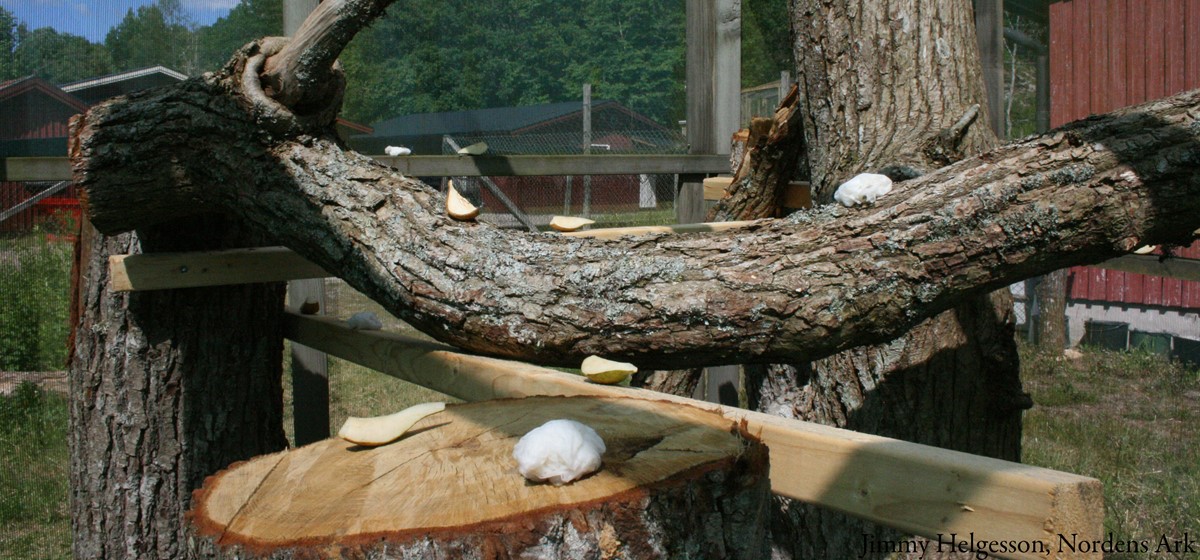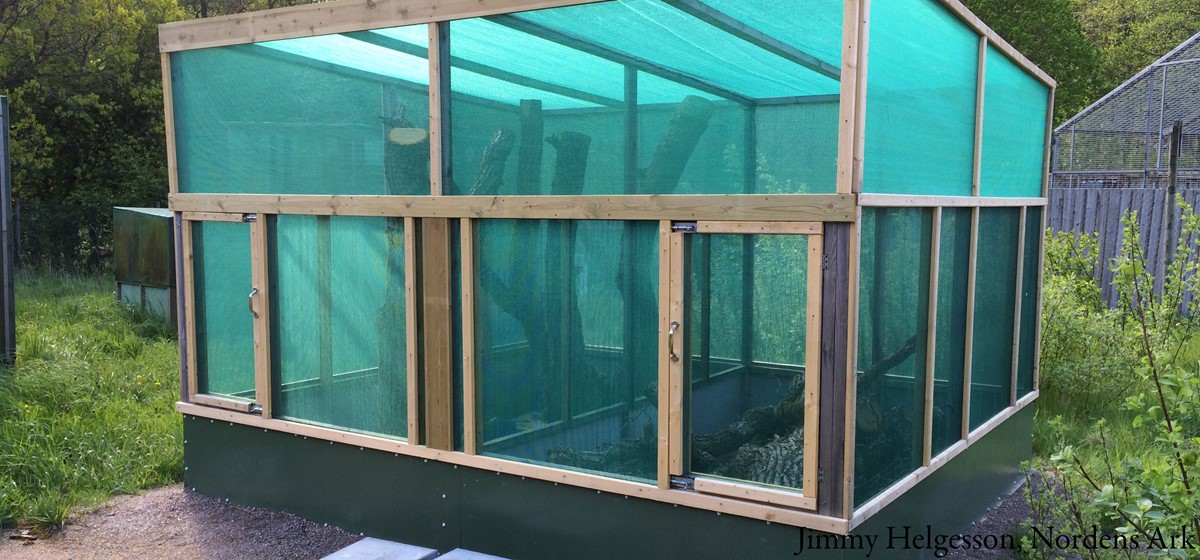Conservation breeding
Nordens Ark was given the task of developing suitable breeding methods for the longhorn beetle. But how does one come up with an effective way to rear a beetle that spends most of its life as a larva in newly dead oaks? Today, few people have experience of keeping these beetles, which has made the whole thing an incredibly exciting challenge.
The longhorn belongs to the Cerambycidae beetle family, most species of which live in dead wood and/or the bark of woody plants. The longhorn beetle is associated with newly dead oak wood, and it’s there that our challenge, in terms of breeding them, begins.
Every year we find a number of newly dead oak logs with coarse bark. The logs must be of the right quality and, to stop other insects laying eggs in them, have to be collected during the winter. The logs are placed in an empty net cage, and it’s important that it’s insect-proof and stands in a sunny spot. The longhorn beetle appears to prefer open habitats with a lot of sun, as it requires warmth.
Hatching season for the longhorn beetle is from late June to early July. During this period, the beetles hatch from wood that was infected in previous years, and as soon as the animal keepers spot a newly hatched individual it’s caught, sexed and moved to the new cage. The newly hatched beetles are very lively and quickly start to mate. The females soon lay eggs in the new oak wood. The beetles are fed with a nectar solution and nectar-rich flowers.
As quickly as they arrived, they’re gone again. The longhorn beetle lives for just one or two weeks as a fully-formed beetle. The laid eggs hatch after about two weeks and the larva starts gnawing winding paths about 10 mm wide in the wood. The larvae live for between one and two years in the wood, the exact period presumably depending on weather conditions and availability of food under the bark. At the end of the larval stage, the larva produces a cylindrical chrysalis chamber.
Within this, pupation occurs some time during early summer. After about two weeks as a pupa, a fully-formed beetle emerges. It stays in the pupal chamber for a few more days to allow the outer skeleton to harden. The beetle then begins to chew its way out via a circular hatching hole about 6 mm wide. As soon as it comes out, the animal keepers are there to move it to a new cage – and so it all begins again.




